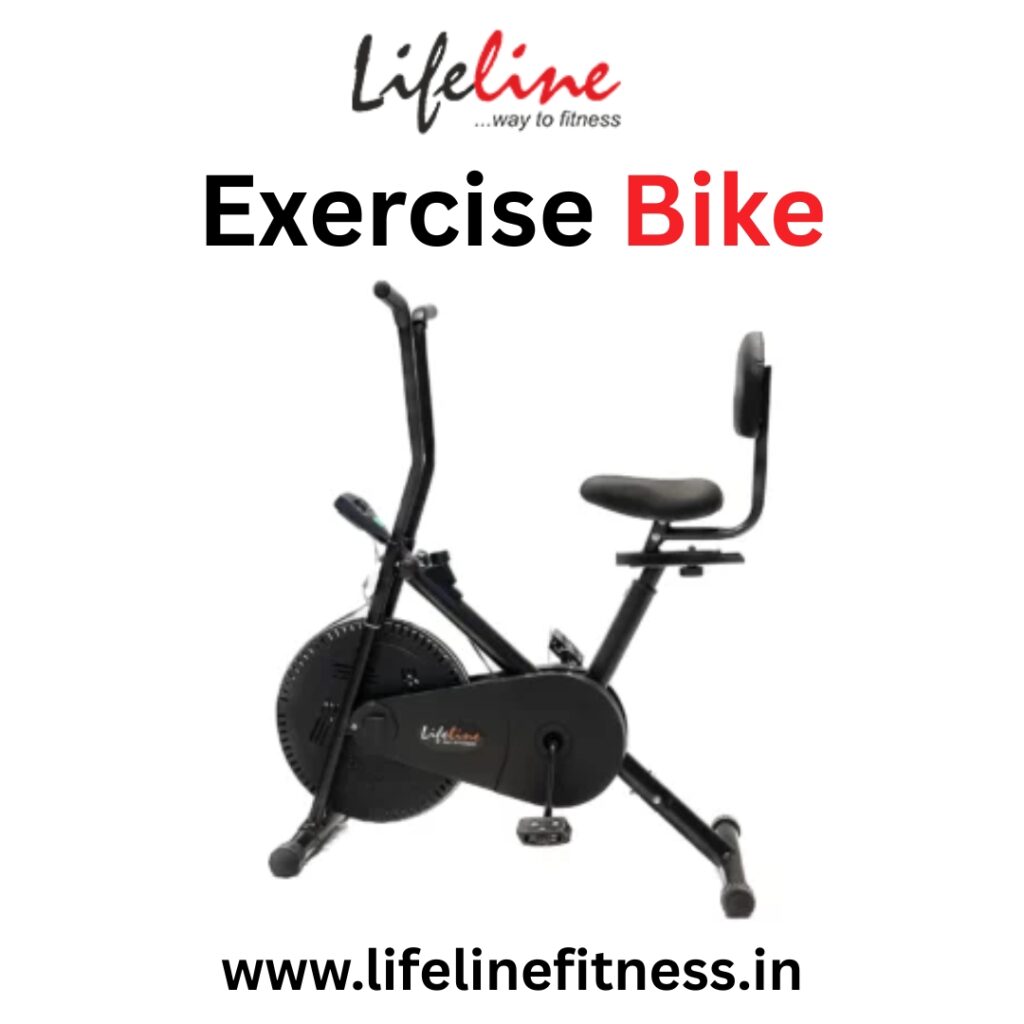
Exercise Bike
Maintaining good heart health is essential for living a long, active, and fulfilling life. Cardiovascular diseases are among the leading causes of mortality worldwide, making it crucial to adopt lifestyle habits that keep the heart strong. One of the most effective and accessible ways to enhance heart health is through regular exercise — and a highly efficient tool for this is an exercise bike.
Exercise bikes have gained immense popularity in homes and gyms due to their convenience, low-impact design, and versatility. Not only do they help burn calories and improve endurance, but they also play a critical role in maintaining cardiovascular health. In this blog, we’ll explore how regular workouts on an exercise bike can strengthen the heart, improve overall fitness, and why choosing the right equipment can maximize your benefits.
Understanding the Benefits of Cardiovascular Exercise
Cardiovascular exercise, also known as cardio, involves activities that increase your heart rate and breathing for a sustained period. The primary goal is to improve the efficiency of the cardiovascular system, which includes the heart, lungs, and blood vessels.
Some key benefits of cardiovascular exercise include:
- Strengthening the heart muscles
- Improving blood circulation
- Reducing blood pressure
- Lowering cholesterol levels
- Enhancing lung capacity and oxygen utilization
Among various forms of cardio, exercise bikes provide a low-impact option that is easy on the joints while delivering effective cardiovascular benefits.
How an Exercise Bike Supports Heart Health
An exercise bike provides a controlled and consistent workout that is ideal for boosting heart health. Here’s how it works:
1. Increases Heart Rate Gradually
During a cycling session, pedaling at moderate to high intensity raises your heart rate. This gradual increase strengthens the heart muscles, allowing the heart to pump blood more efficiently. Over time, regular cycling improves cardiac output, which is the amount of blood your heart pumps per minute.
2. Improves Blood Circulation
Pedaling encourages blood flow to the lower body, which helps improve circulation throughout the body. Better circulation ensures that organs receive sufficient oxygen and nutrients, reducing the risk of cardiovascular problems such as clogged arteries and hypertension.
3. Reduces Risk of Heart Disease
Regular cardio workouts, including cycling on an exercise bike, lower LDL (bad) cholesterol and increase HDL (good) cholesterol. This balance reduces plaque buildup in arteries, lowering the risk of heart attack, stroke, and other cardiovascular diseases.
4. Aids in Weight Management
Being overweight is a significant risk factor for heart disease. Using an exercise bike consistently helps burn calories and reduce body fat, supporting a healthy weight and indirectly improving heart health.
5. Regulates Blood Pressure
Studies have shown that moderate-intensity cardio exercises like cycling can help regulate blood pressure by improving vascular function and reducing arterial stiffness. Regular sessions on an exercise bike can contribute to lower systolic and diastolic pressure over time.
Types of Exercise Bikes and Their Benefits
Choosing the right exercise bike is important for both comfort and effectiveness. There are three main types of exercise bikes:
1. Upright Exercise Bike
This type simulates a traditional bicycle. It engages the lower body and core muscles while providing a solid cardiovascular workout. Upright bikes are ideal for improving endurance and overall heart health.
2. Recumbent Exercise Bike
Recumbent bikes have a reclined seat and back support, reducing pressure on the knees and lower back. They are perfect for individuals with joint problems or those recovering from injuries while still offering excellent cardiovascular benefits.
3. Spin Bike (Indoor Cycling Bike)
Spin bikes are designed for high-intensity workouts, often used in indoor cycling classes. They allow users to adjust resistance levels, providing both strength and cardio training. Spin workouts can significantly boost heart rate and calorie burn.
Each type of exercise bike offers unique benefits, but all contribute to improved heart health when used regularly.
How to Use an Exercise Bike for Optimal Heart Health
To maximize cardiovascular benefits and ensure safety, it’s important to follow proper guidelines when using an exercise bike:
- Warm-Up: Start with 5–10 minutes of low-intensity pedaling to gradually raise your heart rate.
- Maintain Proper Posture: Keep your back straight, shoulders relaxed, and hands lightly on the handlebars.
- Monitor Intensity: Use the “talk test” or a heart rate monitor to ensure you are working at a moderate-to-vigorous intensity.
- Vary Your Routine: Alternate between steady-state pedaling and interval training to challenge your heart and prevent plateaus.
- Cool Down: End with 5–10 minutes of slow pedaling to bring your heart rate back to normal.
- Consistency: Aim for at least 150 minutes of moderate-intensity or 75 minutes of vigorous-intensity cycling per week, as recommended by health authorities.
Health Benefits Beyond the Heart
While cardiovascular health is the primary focus, using an exercise bike offers multiple additional benefits:
- Weight Management: Cycling burns calories efficiently, helping maintain or reduce body weight.
- Strengthens Muscles: Pedaling tones the lower body, including the quadriceps, hamstrings, glutes, and calves.
- Joint-Friendly Workout: Low-impact cycling minimizes stress on knees, hips, and ankles.
- Mental Health Boost: Exercise releases endorphins, reducing stress, anxiety, and symptoms of depression.
- Improved Stamina and Endurance: Regular cycling increases energy levels and overall physical performance.
Tips for a Heart-Healthy Exercise Bike Routine
To make the most of your workouts, consider the following tips:
- Set Realistic Goals: Start with shorter sessions and gradually increase intensity and duration.
- Mix Intensity Levels: Combine steady-state pedaling with high-intensity intervals for maximum cardiovascular benefits.
- Stay Hydrated: Drink water before, during, and after your workouts.
- Pair with a Healthy Diet: Complement cycling with a balanced diet rich in fruits, vegetables, whole grains, and lean proteins.
- Listen to Your Body: Avoid overexertion and rest if you experience unusual fatigue or discomfort.
Common Myths About Exercise Bikes
Myth 1: Exercise bikes are only for weight loss.
Fact: While they help burn calories, they are primarily effective for cardiovascular health, endurance, and overall fitness.
Myth 2: Exercise bikes don’t provide full-body workouts.
Fact: Although they target the lower body, cycling engages the core and improves balance. Adding upper-body movements or resistance bands can enhance overall strength.
Myth 3: Only young people benefit from exercise bikes.
Fact: Exercise bikes are low-impact and adjustable, making them suitable for all ages, including seniors, to maintain heart health and mobility.
Conclusion
Regular workouts on an exercise bike provide numerous benefits for cardiovascular health. From strengthening the heart and improving circulation to regulating blood pressure and aiding in weight management, cycling offers a convenient, low-impact, and highly effective way to stay healthy.
Consistency is key — incorporating regular sessions into your weekly routine can lead to better stamina, higher energy levels, and improved overall well-being. When paired with a healthy lifestyle, an exercise bike becomes a powerful tool for long-term heart health.
For those looking for a reliable, high-quality bike that combines durability, comfort, and performance, Lifeline Fitness offers models designed to make every cycling session safe, effective, and enjoyable. With the right equipment and commitment, improving your heart health has never been easier.


